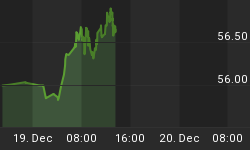Another Friday, Another Yen Day
While the dollar rebound accelerates on broadening risk aversion, the Japanese yen remains the best performer among major FX, just as was the case in the last 3 Fridays. The case for continued yen strength remains based on the currency's low yielding stature, the central bank's looming end of corporate bond purchases (unlike FOMC whose desire to withdraw liquidity is strictly in talk rather action) and the US Treasury's escalating borrowing, which limits rebounds in the USD and renders JPY lustre against other FX.
Dollar Weakness Couldn't do the Trick for US Stocks
We warned on Monday that dollar weakness alone could not do the trick in propping US equities to new highs especially amid fading support from the macroeconomic angle. 4-month lows in Oct industrial production, 6-month lows in Oct housing starts and slowing Oct core retail sales underscored the absence of economic validation and the crucial role of USD weakness as the main driver to higher US equities. This was especially the case as US indices have outpaced those in Japan (Dow/Nikkei ratio at highest since Dec 08) and the UK (Dow/FTSE at 3-month highs). In fact, the imbalance within US equities was highlighted by the fact that the Dow stood at 7-month highs relative to the S&P500.
S&P-Dow 50% Failure & Euro Support
The ensuing retreat in equity indices and the implication for FX merits special scrutiny after the prominent failure for the S&P500 to break above the 1,120 level (several failed attempts), which marks the 50% rebound of the decline from the 2007 record high to the March 666 low. While the S&P500 never closed near that level, the Dow did close above its 50% retracement equivalent of 10,335 on Monday, Tuesday and Wednesday, but more importantly, will fail to close above it for the week. FX players are well aware of the twin failures in these high profile indices.
What to Watch in FX & Oil
JC Trichet's support for Bernanke's Monday remarks about the importance of USD strength went unnoticed as the euro continued to power ahead against the greenback yesterday, but today's pullback requires extra caution from EUR bulls. $1.4825-30 in EURUSD is a closely watched level as it signifies a clear break of the 50% retracement of the rise from the Nov 3 rd low (1.4626) to the Nov 11 th high (1.5048). The price held up despite 7 daily attempts to break it over the last 3 weeks. A close below $1.4820 today implies the weekly breach of a crucial technical level, which would call up the next support at $1.4700.
Risk aversion could especially intensify next week after Japan 's Nikkei closed at fresh 4-month lows, falling for the 4 th consecutive week -- its longest since Sep-Oct of last year. The resulting selloff in the higher yielding AUD and NZD was concentrated in NZD amid pressure on RBNZ to scrap its inflation target. But with the RBA signalling hints about a temporary pause in its tightening (in Dec), AUD could see its share of more deleveraging.
GBP broadens selloff as GBPUSD drops for the 4 th straight session, nearing $1.6420, but support is found at $1.6280. EURGBP breaks out of its 5-week trend line resistance of 0.8950 and is likely to make a run for 0.9060. USDCAD extends its 4-day winning streak to a 2-week high of 1.0715, eyeing the 2-month trend line resistance at 1.0770, a break of which to call up 1.0850. CADJPY, EURJPY and GBPJPY eyeing 82.20, 131.10 and 144.50 respectively.















